The Noctua NH-U12A CPU Cooler Review: Big Performance in a Small Space
by E. Fylladitakis on July 11, 2019 12:30 PM EST- Posted in
- Cases/Cooling/PSUs
- Noctua
- CPU cooler
The Noctua NH-U12A CPU Cooler
Noctua designed the NH-U12A to be a high performance CPU cooler, yet not too large or too expensive. The use of 120 mm fans allows the NH-U12A to be compatible with more cases and a bit easier to install as well, while it also reduces the manufacturing cost of the cooler a little. Overall, the NH-U12A is compatible with most of the motherboards and processors released in the past several years, including LGA 2011 and LGA 2066 processors. The only processor socket of note that it's not compatible with is AMD's socket TR4 for Threadripper processors; these large processors require a matching larger base, and Noctua has the NH-U12S TR4-SP3 specifically for that processor.
Physically, the NH-U12A is relatively simple. It is a single tower cooler, with the array of fins floating above a small base and relying on heatpipes to transfer the thermal energy away from that base and to the main body of the cooler. Despite the 120 mm fan size, the NH-U12A is not exactly compact – it is short enough to fit inside the majority of ATX-compliant cases, but the fin array is thick and the presence of two 120 mm fans makes the cooler even wider. Even though Noctua made sure that the NH-U12A will stay clear of the PCI Express slots, the cooler will cover a significant portion of the motherboard and is very likely to hang over the RAM slots on many boards, limiting RAM height on these slots to 42 mm.
Noctua claims that the NH-U12A brings 140 mm cooler performance in 120 mm size. We can see why, as the array of fins is significantly wider than that of the NH-U12S, a cooler that the company introduced as a top-tier 120 mm cooler and even made a Threadripper-specific version of it. Aside from the wider array of fins, the cooler has seven heatpipes, accelerating heat transfer even further. The heatpipes are made of copper but are nickel-plated. The joints are all soldered, ensuring maximum thermal transfer and mechanical cohesion.
Due to the dense fin array, Noctua’s engineers had to optimize air pressure and went with two fans instead of one. The fans used are the company’s own 120mm NF-A12x25 fans, which combine airflow with good air pressure, making them ideal for fan speed controlled CPU coolers. Still, it appears that the very dense array of fins on the NH-U12A forced the designers to use two fans in order to maintain viable airflow levels, at least when the speed of the fans is low.
The base of the cooler that makes contact with the processor is split into two parts. The bottom half of the base is made out of nickel-plated copper, maximizing the heat transfer rate from the CPU to the heatpipes. It is extremely well machined, perfectly flat and smooth. The top half serves only as a mechanical support and is made out of aluminum, while the mounting bracket is nickel-plated steel.


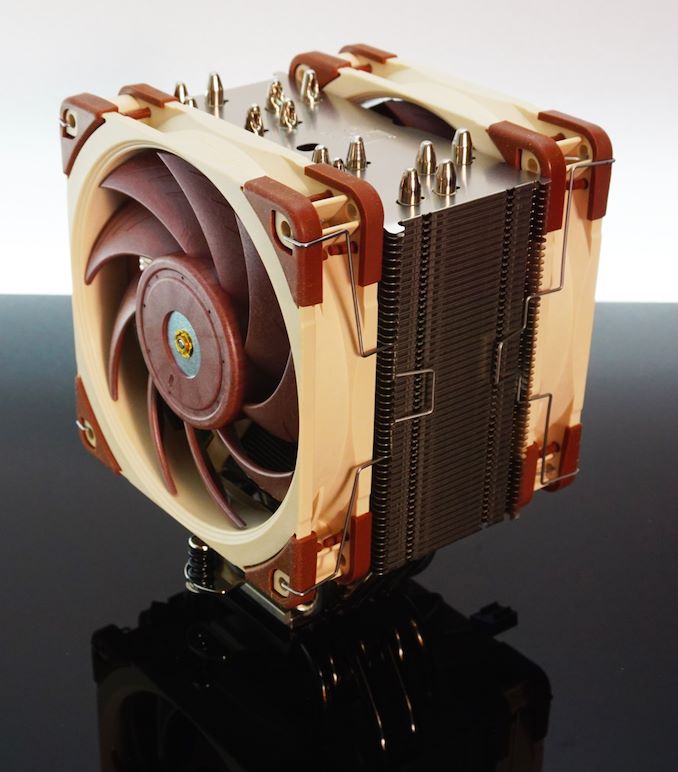
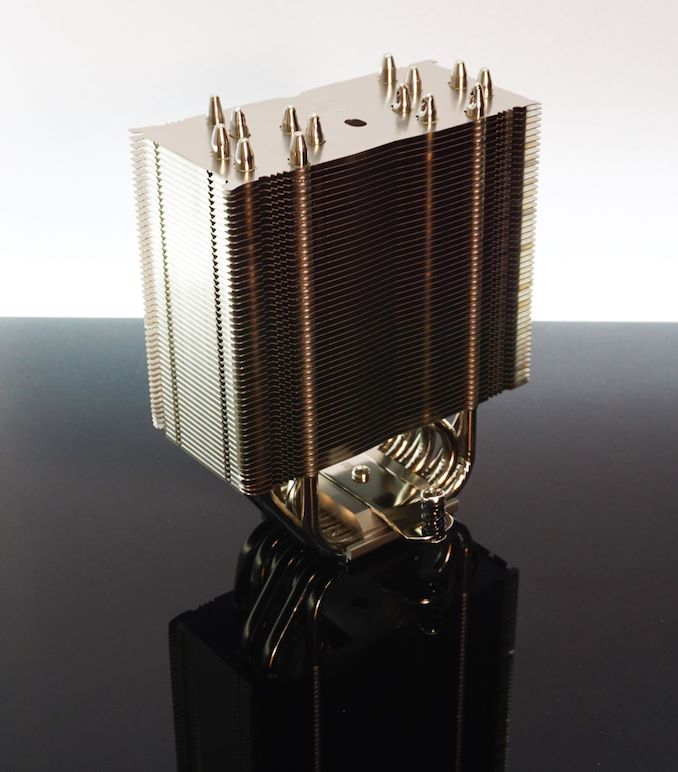
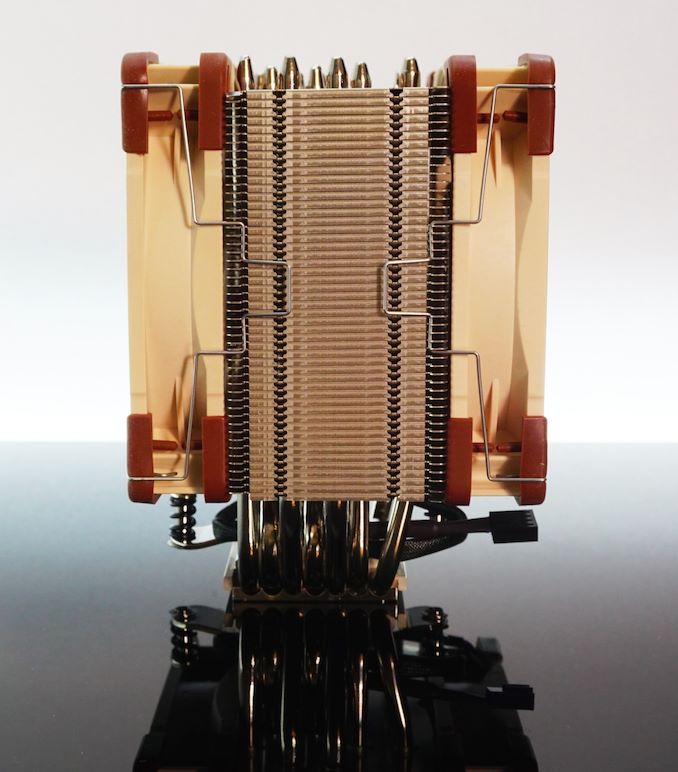
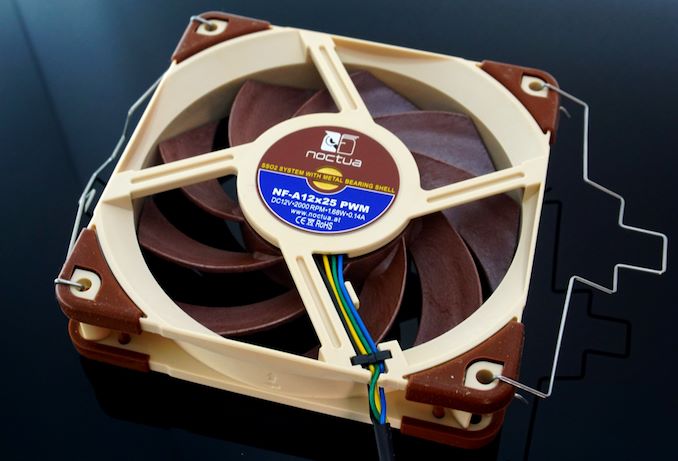
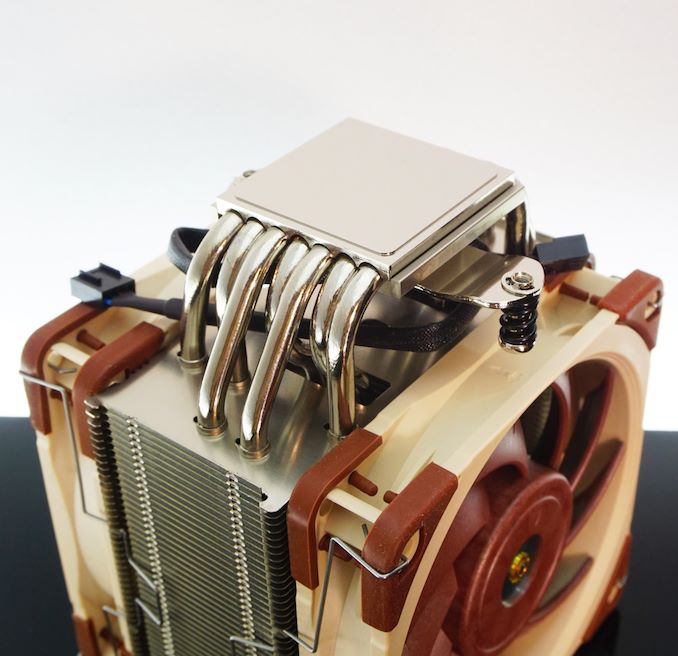








68 Comments
View All Comments
Tunnah - Thursday, July 11, 2019 - link
I was on board until the price. I paid £60 for my NH-D14 and expected a price bump considering it's now 8 years old, but nearly double the price is a bit too far.GreenReaper - Thursday, July 11, 2019 - link
The pound isn't worth what it used to be eight years ago, either:https://www.xe.com/currencycharts/?from=GBP&to...
nivedita - Thursday, July 11, 2019 - link
Noctua isn’t an American companylogamaniac - Thursday, July 11, 2019 - link
nor the pound an American currencyDug - Thursday, July 11, 2019 - link
Nice to see a new cooler review. Hopefully more can come down the pipeline and get rid of the old coolers on here that you can't even buy.eastcoast_pete - Thursday, July 11, 2019 - link
Thanks for the review. Two questions/comments:1. You mentioned the Evo212 in some paragraphs and a graph. I also believe that this is a good comparison cooler, as it also addresses price/performance. And, while the Noctua is a bit of a niche product, I would have like to see how it did compared to the higher priced "extra quiet" heatsinks shown. If you have the data, could you share them?
2. I know that many people who are looking for that kind of cooler wouldn't care for whatever setup came with their CPU. However, those have the best price - free (with the CPU). It would be nice to know just how much extra thermal performance one gets by replacing the coolers that come with the CPU. May suggestion is to show the performance of the respective boxed Intel and AMD cooler alongside. With AMD making noise about their Wraith Spire cooler's performance (included with most of their desktop CPUs), I would really like to know just how much better these aftermarket ones are. Thanks!
eastcoast_pete - Thursday, July 11, 2019 - link
For question 1. "It refers to the 212 cooler, the Noctua is obviously already shown.Mil0 - Friday, July 12, 2019 - link
I second the suggestion for comparing it to the wraith (spire), esp with Ryzen's PBO.Edkiefer - Thursday, July 11, 2019 - link
I always liked the NH-U14S there going for low 60$ (about same as NH-U12S). You do need a case to support the height.LoneWolf15 - Thursday, July 11, 2019 - link
I'd absolutely love to find out how the newest Noctuas (UH12A, NH-U14S NH-D15, NH-D15S) compare to the older NH-D14, NU-U12S, and the Thermalright TRUE 120.The results on Noctua's new gear is amazing, but I contacted Thermalright to ask about heat dissipation for my TRUE Black 120 from 2008, and found it's rated for a stunning 240 watts. I have two Noctua Redux 120mm 1300rpm fans on it and it's keeping a Core i9-9900K (running all eight cores at max turbo 4.8GHz at 100% usage in Folding@Home) stable , a bit over 80C at 160+ watts load under constant use. An eleven year old (admittedly heavy nickel-plate copper with six heat pipes) cooler. I'm still impressed.
I'd love to know how far we've really come since the D14 and TRUE120 just to see if there's a significant difference.